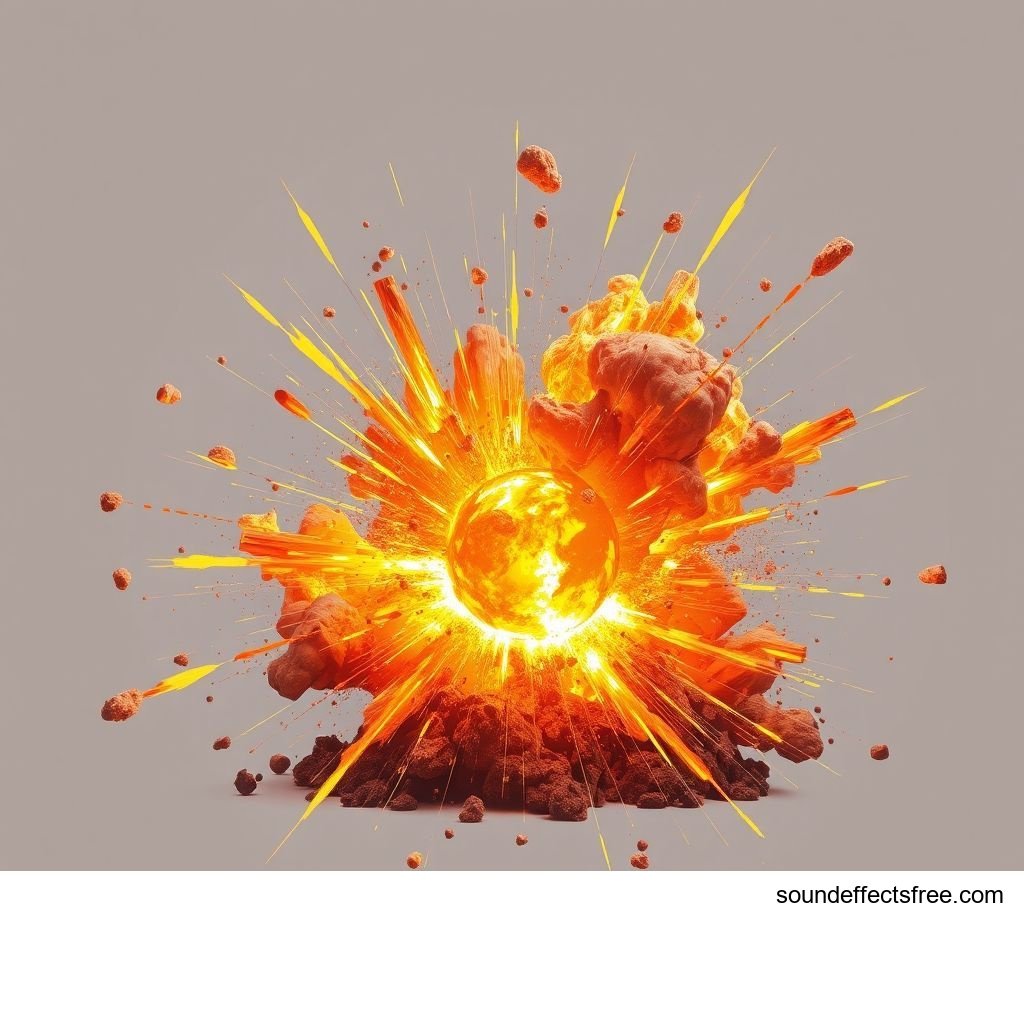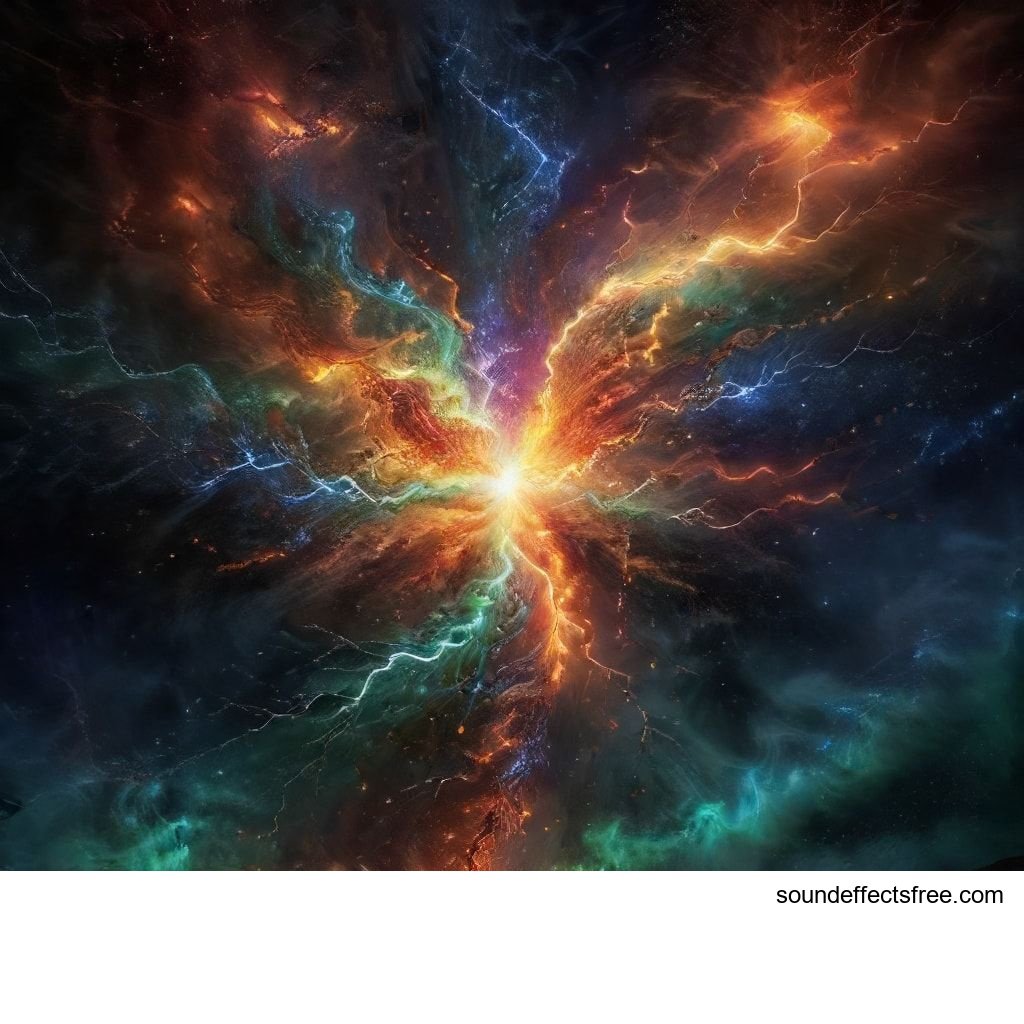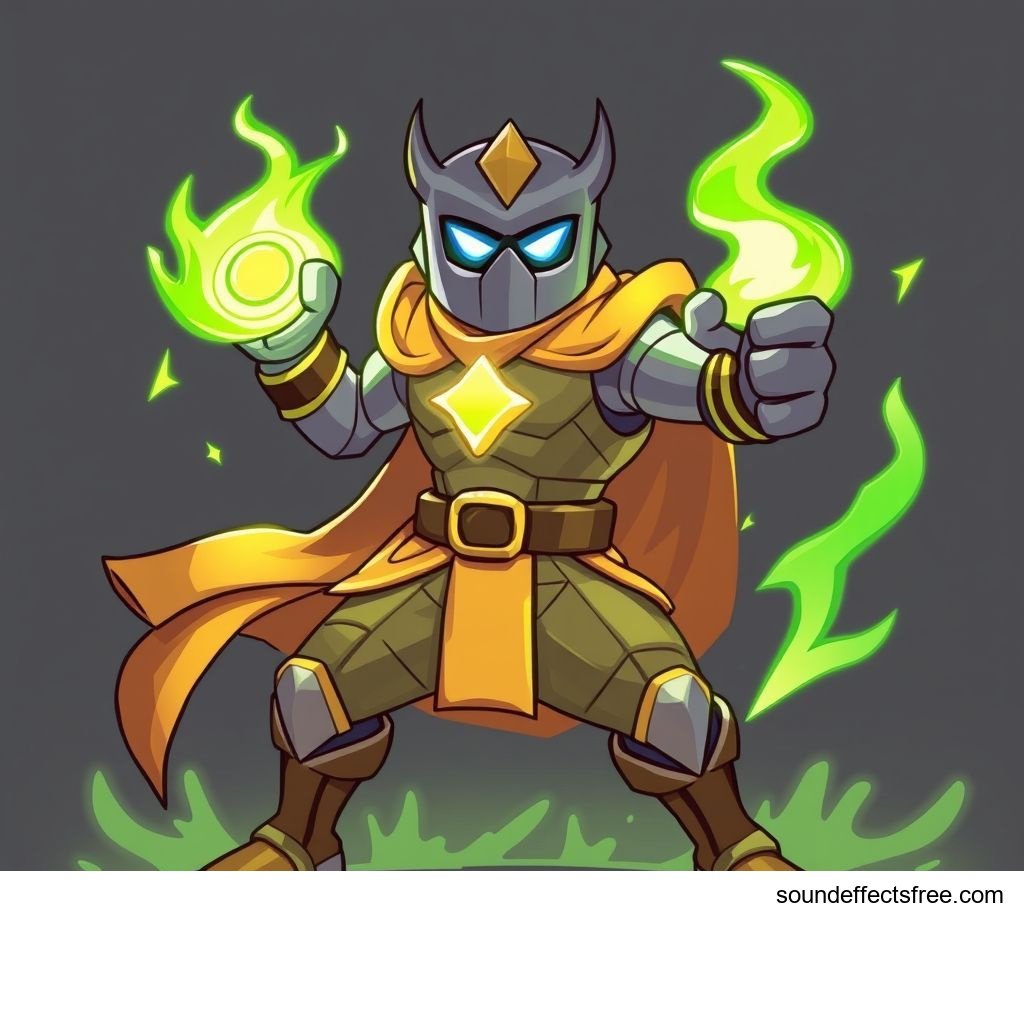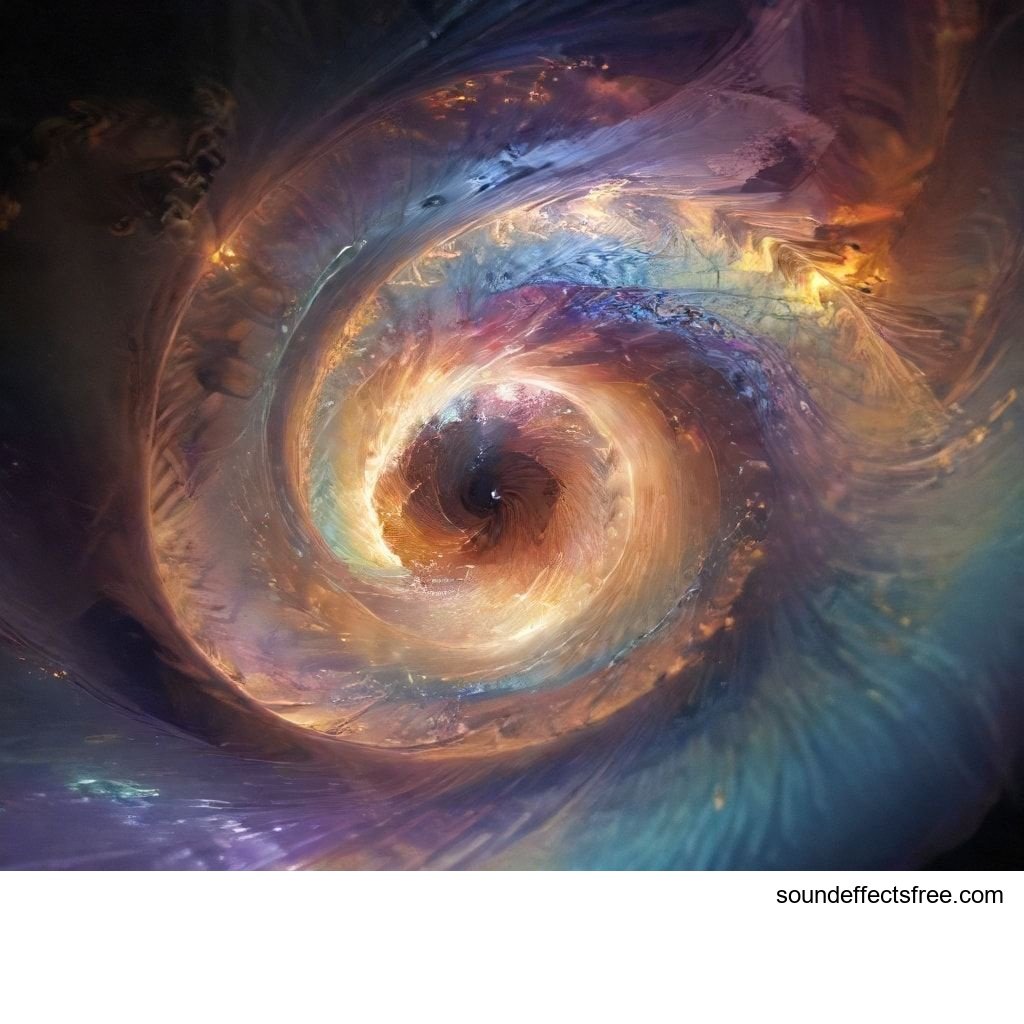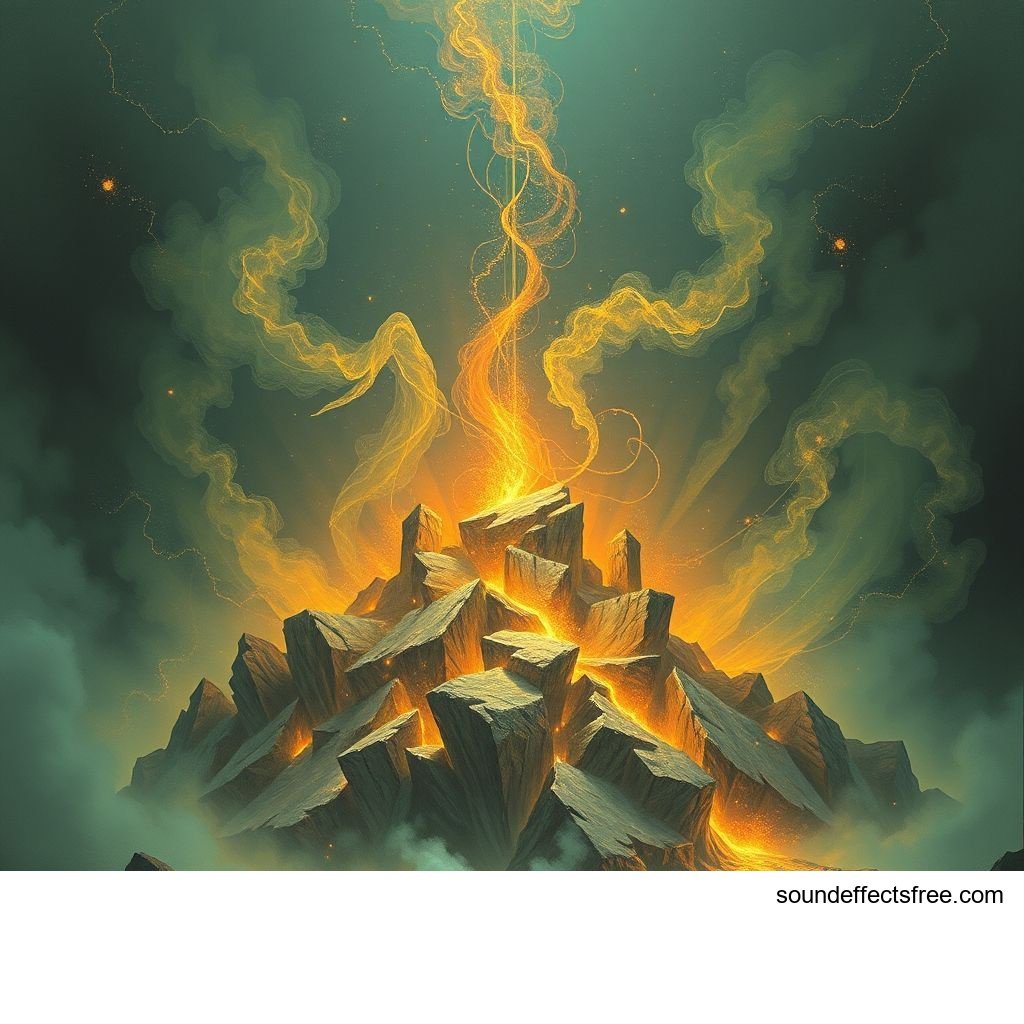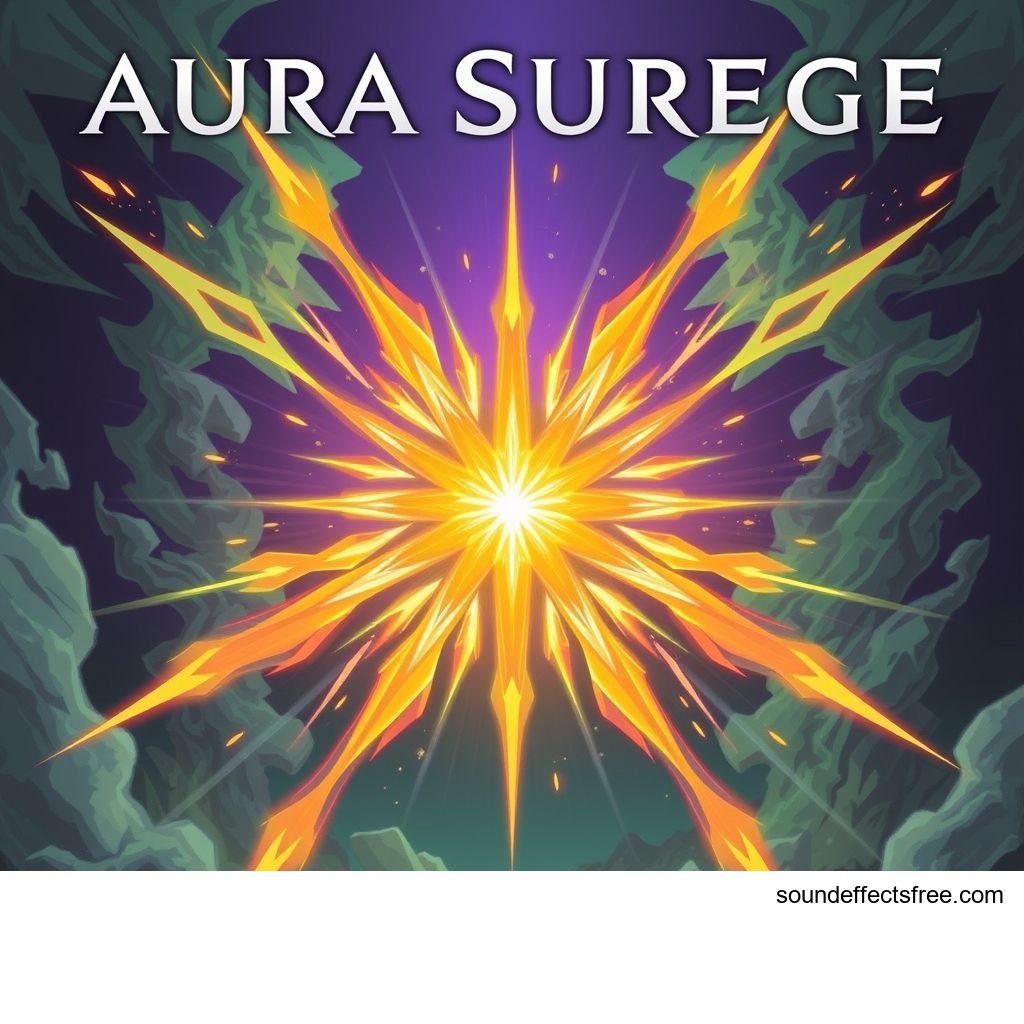Explosive Energy Impact: Crafting Powerful Audio Effects
Every memorable experience needs a strong impact. From a superhero's landing to a wizard's spell, the right audio impact elevates the moment. Creating a powerful energy impact sound effect is an art form. It requires skill, technical knowledge, and creative flair. This article explores the world of designing these crucial sound elements. We will discuss techniques for crafting truly impactful audio. Dive into the intricacies of creating a stunning energy impact that resonates with audiences.
Applications in Media
Impact sounds are vital across various media. They define critical moments and add visceral feedback. A well-designed impact can make an ordinary scene extraordinary. Consider the energy release in a fantasy spell or the powerful burst of a sci-fi weapon. These impact effects are more than just background noise. They are core storytelling elements.
Industry-Specific Uses
In video games, every hit, jump, or character ability needs a distinct impact. These audio effects provide immediate feedback to players. They enhance gameplay immersion. Film and television rely on impact for dramatic tension. Think of a car crash impact or a magical burst of power. Animation also benefits from unique impact sounds. They exaggerate actions and bring characters to life. Each medium demands a specific kind of impact. This ensures the sound fits the visual narrative perfectly.
Creative Techniques
Designing a unique impact involves creativity. Consider the desired emotion and scale. Is it a small burst of magic or a massive explosion? Layering different sound elements is common. A sharp transient, a sustained body, and a decaying tail form a complete impact. Experiment with processing. Distortions, reverbs, and delays shape the final sound. A truly great impact has character. It feels right for the scene. Think about the energy behind the event.
Technical Analysis
Understanding the technical aspects is crucial for a great impact. Sound is vibration. Analyzing these vibrations helps refine your audio effect. Every impact has a unique sonic signature. Mastering this analysis improves your sound design.
Waveform Characteristics
An impact sound typically features a sharp attack. This is the initial burst of sound. It gives the sense of instantaneous force. The sustain phase follows the attack. This is where the core energy of the impact resides. Finally, the decay or release describes how the sound fades out. This can be quick or lingering. A long decay might imply a large explosion. A short decay suggests a swift, sharp impact. Analyzing these elements helps in shaping the sound. It refines the overall impact profile.
Frequency Profile
The frequency content of an impact is key. Low frequencies provide weight and power. Mid-range frequencies give the sound its presence and detail. High frequencies add crispness and sparkle. A well-balanced impact spans the frequency spectrum. Too much bass makes it muddy. Too much treble makes it thin. EQ adjustments are essential. They shape the energy of the sound. This ensures the impact cuts through the mix. A strong low-end impact feels very different from a high-frequency burst.
Production Tips
Creating high-quality impact sound effects involves practical steps. These tips help refine your production workflow. Good techniques lead to great sounds. Every step matters in crafting that perfect impact.
Recording & Editing
Source material is vital. Record a variety of sounds. Consider dropping heavy objects or striking metal. Even small sounds can become massive impact effects with processing. Capture a wide dynamic range. This preserves detail for later manipulation. Editing involves careful trimming and cleaning. Remove unwanted noise. Isolate the strongest parts of the recorded sound. This clean foundation allows for better layering. A strong initial impact often comes from clean source recordings.
Software Tools
Digital Audio Workstations (DAWs) are your primary tools. Pro Tools, Ableton Live, and Logic Pro are popular choices. Plug-ins enhance sound design capabilities. Compressors manage dynamics. Equalizers sculpt the frequency profile. Reverb adds space and atmosphere. Distortion and saturation add grit and power. Synthesizers can also create artificial impact sounds. These tools allow for endless experimentation. They help shape the raw energy into a polished impact. Look for Pro Sound Effects for professional libraries and tools.
Creative Implementation
Beyond basic production, creative techniques transform an impact. They add depth, realism, and unique character. Push the boundaries of your sound design. Make every impact unforgettable.
Layering Methods
Layering is fundamental for complex impact sounds. Combine multiple elements. A low thud, a sharp crack, and a metallic clang can form one impact. Each layer contributes a different sonic quality. Think about the "whoosh" before a magical burst. Or the debris sound after an explosion. Time-aligning these layers is crucial. Ensure they hit at precisely the same moment. This creates a cohesive, powerful impact. Experiment with different textures. This ensures a rich, full-bodied impact.
Spatial Effects
Spatialization places your impact sound in a virtual space. Reverb and delay are key. Short, tight reverb can place an impact in a small room. Long, diffuse reverb suggests a vast open space. Delay can create echoes. This adds a sense of scale to a large explosion. Panning moves the sound left or right. It tracks on-screen action. Consider the environment. How would an impact sound in a cave versus open air? These effects dramatically enhance immersion. They make the impact feel physically present.
Sound Pack Integration
Once you have your custom impact sounds, integrating them is the next step. Sound packs offer a curated collection of effects. Using them effectively maximizes their power.
Using with Other Sounds
Powerful impact sounds often work best when mixed thoughtfully. Combine your primary impact with secondary effects. Add a small "debris" sound for a ground impact. Perhaps a subtle "whoosh" before a magic burst. These supporting elements enhance the main impact. Ensure your core impact remains prominent. Balance levels carefully. Make sure no element gets lost. These combinations create a richer sonic tapestry. For related options, check out Related impact sounds.
Complete Collection
A comprehensive sound library is an invaluable asset. It provides variety and consistency. Explore different types of impact sounds within a single pack. This ensures a cohesive sound palette for your projects. A full collection allows for more creative freedom. It helps you find the perfect impact for any situation. Get the full sound pack for comprehensive audio solutions. This gives you every kind of impact you might need. Consider how a simple UI Success Chime can also be an 'impact' in its own way.
Frequently Asked Questions
Q1: What makes an energy impact sound effective?
A1: An effective energy impact sound has a clear, sharp transient, a powerful body, and a well-defined decay. It also accurately conveys the force and energy of the event.
Q2: How can I create a unique magic burst sound effect?
A2: To create a unique magic burst, layer synthetic elements with organic sounds. Add shimmers, chimes, and short reverbs. Combine them to create a distinct magical impact.
Q3: What's the difference between an explosion and a typical impact sound?
A3: An explosion is a type of impact that implies destructive force and usually has a longer, more chaotic decay. A typical impact can be sharper and shorter, like a punch or a small object hitting a surface. Both convey significant energy.
Q4: Are there common pitfalls when designing impact sounds?
A4: Common pitfalls include muddy low-end, harsh high-end, and lack of dynamic range. Over-processing can also flatten the sound. Always strive for clarity in your impact.
Q5: Can a single sound source create a strong impact?
A5: Yes, a single, well-recorded sound source can create a strong impact. However, layering often adds depth, complexity, and a greater sense of energy to the overall impact effect.
